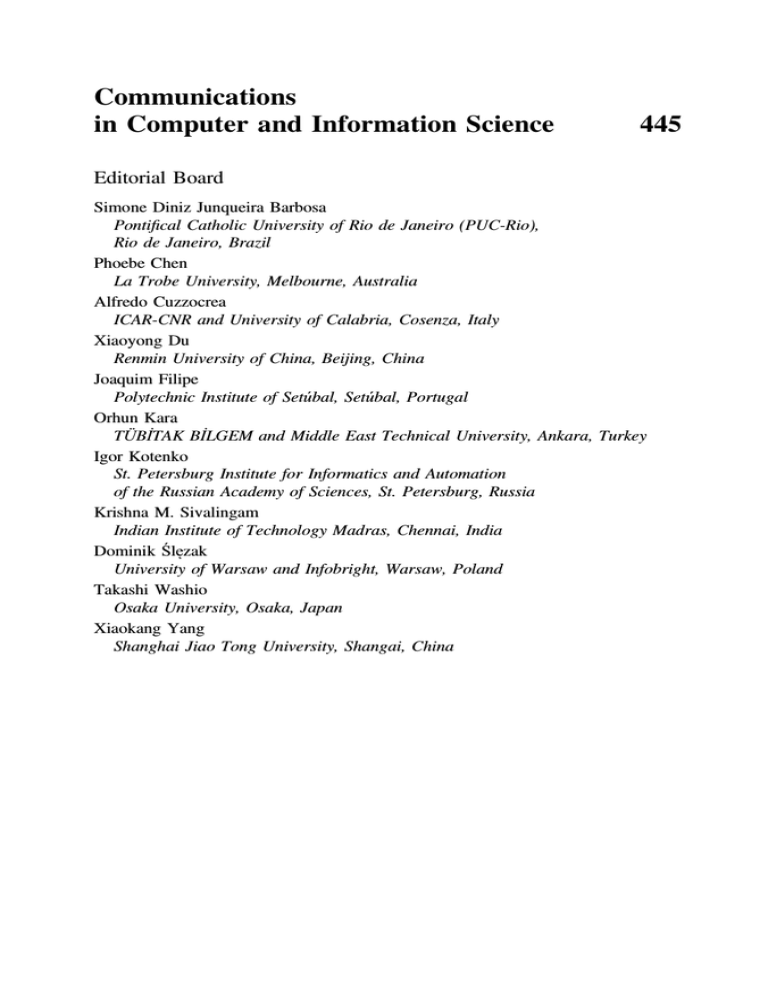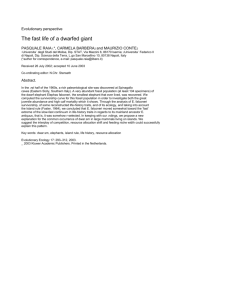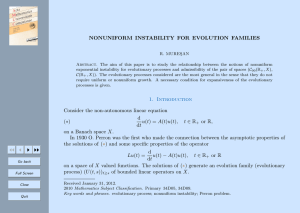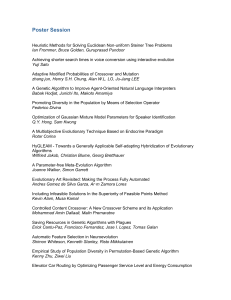
Communications
in Computer and Information Science
445
Editorial Board
Simone Diniz Junqueira Barbosa
Pontifical Catholic University of Rio de Janeiro (PUC-Rio),
Rio de Janeiro, Brazil
Phoebe Chen
La Trobe University, Melbourne, Australia
Alfredo Cuzzocrea
ICAR-CNR and University of Calabria, Cosenza, Italy
Xiaoyong Du
Renmin University of China, Beijing, China
Joaquim Filipe
Polytechnic Institute of Setúbal, Setúbal, Portugal
Orhun Kara
TÜBİTAK BİLGEM and Middle East Technical University, Ankara, Turkey
Igor Kotenko
St. Petersburg Institute for Informatics and Automation
of the Russian Academy of Sciences, St. Petersburg, Russia
Krishna M. Sivalingam
Indian Institute of Technology Madras, Chennai, India
Dominik Ślęzak
University of Warsaw and Infobright, Warsaw, Poland
Takashi Washio
Osaka University, Osaka, Japan
Xiaokang Yang
Shanghai Jiao Tong University, Shangai, China
More information about this series at http://www.springer.com/series/7899
Clara Pizzuti Giandomenico Spezzano (Eds.)
•
Advances in Artificial Life and
Evolutionary Computation
9th Italian Workshop, WIVACE 2014
Vietri sul Mare, Italy, May 14–15
Revised Selected Papers
123
Editors
Clara Pizzuti
Giandomenico Spezzano
CNR-ICAR
Rende
Italy
ISSN 1865-0929
ISBN 978-3-319-12744-6
DOI 10.1007/978-3-319-12745-3
ISSN 1865-0937 (electronic)
ISBN 978-3-319-12745-3 (eBook)
Library of Congress Control Number: 2014954577
Springer Cham Heidelberg New York Dordrecht London
© Springer International Publishing Switzerland 2014
This work is subject to copyright. All rights are reserved by the Publisher, whether the whole or part of the
material is concerned, specifically the rights of translation, reprinting, reuse of illustrations, recitation,
broadcasting, reproduction on microfilms or in any other physical way, and transmission or information
storage and retrieval, electronic adaptation, computer software, or by similar or dissimilar methodology now
known or hereafter developed. Exempted from this legal reservation are brief excerpts in connection with
reviews or scholarly analysis or material supplied specifically for the purpose of being entered and executed
on a computer system, for exclusive use by the purchaser of the work. Duplication of this publication or
parts thereof is permitted only under the provisions of the Copyright Law of the Publisher’s location, in its
current version, and permission for use must always be obtained from Springer. Permissions for use may be
obtained through RightsLink at the Copyright Clearance Center. Violations are liable to prosecution under
the respective Copyright Law.
The use of general descriptive names, registered names, trademarks, service marks, etc. in this publication
does not imply, even in the absence of a specific statement, that such names are exempt from the relevant
protective laws and regulations and therefore free for general use.
While the advice and information in this book are believed to be true and accurate at the date of publication,
neither the authors nor the editors nor the publisher can accept any legal responsibility for any errors or
omissions that may be made. The publisher makes no warranty, express or implied, with respect to the
material contained herein.
Printed on acid-free paper
Springer is part of Springer Science+Business Media (www.springer.com)
Preface
This volume of the Springer book series Communications in Computer and Information Science contains the proceedings of WIVACE 2014, the Ninth Italian Workshop
on Artificial Life and Evolutionary Computation, held from May 14 to 15, 2014, in
Vietri Sul Mare, Italy.
The goal of WIVACE 2014 was to provide researchers in evolutionary computation,
complex systems, and artificial life with an opportunity for the presentation of relevant
novel researches in a strongly multidisciplinary context. Artificial Life and Evolutionary Computation (ALEC) are core research areas of what has become an exciting
cross-fertilization between evolutionary biology, computer science, and engineering.
Computer scientists and engineers, inspired by evolution in nature, realized that they
could apply the same powerful Darwinian mechanism in computers for practical
purposes, such as complex industrial design.
In recent years, there has been a market trend in the ALEC community toward realworld applications. Techniques, inspired by ALECs wide ambition to produce more
intelligent systems, are not only gaining acceptance in other fields of scientific research,
but also in areas such as business, commerce, and industry. The integration of these
disciplines by different learning and adaptation techniques has in recent years contributed to the emergence of large numbers of new superior class of intelligence known
as Hybrid Intelligence. Hybridization of different intelligent systems is an innovative
approach to construct computationally intelligent systems consisting of artificial neural
network, fuzzy inference systems, rough set, approximate reasoning, and optimization
methods such as evolutionary computation, swarm intelligence, and particle swarm
optimization.
To broaden its range, this year WIVACE 2014 was held in conjunction with the
24th Italian Workshop on Neural Networks WIRN 2014 (May 15–16). Participation in
both workshops has been strongly encouraged in order to favor the interdisciplinary
viewpoint of both communities.
The editors wish to express their sincere gratitude to all persons who supported this
venture and made it feasible. In particular, we wish to thank all the authors who spent
time and effort to contribute to this volume. We would also thank reviewers who, as
members of the Program Committee, not only assessed papers, but also acted as session
chairmen during the workshop. Special thanks, finally, to the invited speakers who,
during the workshop gave three very interesting and inspiring talks: Enrique Alba,
professor at University of Malága, Spain, Yaroslav D. Sergeyev, professor at University of Calabria, Italy, and Roberto Serra, professor at University of Modena and
Reggio Emilia, Italy.
May 2014
Clara Pizzuti
Giandomenico Spezzano
Organization
WIVACE 2014 is organized by the Institute of High Performance Computing and
Networking (ICAR) of National Research Council of Italy (CNR).
Program Chairs
Clara Pizzuti
Giandomenico Spezzano
Institute of High Performance Computing
and Networking (ICAR) of National Research
Council of Italy (CNR), Italy
Institute of High Performance Computing
and Networking (ICAR) of National Research
Council of Italy (CNR), Italy
Local Chairs
Alessia Amelio
Andrea Giordano
Andrea Vinci
Institute of High Performance Computing
and Networking (ICAR) of National
Research Council of Italy (CNR), Italy
Institute of High Performance Computing
and Networking (ICAR) of National Research
Council of Italy (CNR), Italy
Institute of High Performance Computing
and Networking (ICAR) of National Research
Council of Italy (CNR), Italy
Program Committee
Alberto Acerbi
Marco Antoniotti
Michele Amoretti
Luca Ascari
Antonia Azzini
Lucia Ballerini
Armando Bazzani
Vitoantonio Bevilacqua
Leonardo Bocchi
Andrea Bracciali
Ernesto Burattini
Stefano Cagnoni
Raffaele Calabretta
University of Bristol, UK
Università degli Studi di Milano-Bicocca, Italy
Università degli Studi di Parma, Italy
Henesis Srl, Italy
Università degli Studi di Milano, Italy
University of Edinburgh, UK
Università di Bologna, Italy
Politecnico di Bari, Italy
Università degli Studi di Firenze, Italy
University of Stirling, UK
Università degli Studi di Napoli Federico II, Italy
Università degli Studi di Parma, Italy
ISTC-CNR, Italy
VIII
Organization
Angelo Cangelosi
Giulio Caravagna
Timoteo Carletti
Antonio Chella
Roberto Cordeschi
Chiara Damiani
Giovanni De Matteis
Ivanoe De Falco
Antonio Della Cioppa
Giovanni De Matteis
Cecilia Di Chio
Marco Dorigo
Alessandro Filisetti
Francesco Fontanella
Luigi Fortuna
Mario Giacobini
Alex Graudenzi
Marco Locatelli
Giancarlo Mauri
Elena Marchiori
Orazio Miglino
Marco Mirolli
Alberto Moraglio
Monica Mordonini
Luca Mussi
Giuseppe Nicosia
Stefano Nolfi
Pietro Pantano
Mario Pavone
Stefano Pizzuti
Riccardo Poli
Simona E. Rombo
Andrea Roli
Giuseppe Scollo
Roberto Serra
Giovanni Squillero
Pietro Terna
Andrea Tettamanzi
Vito Trianni
Elio Tuci
Leonardo Vanneschi
Marco Villani
Plymouth University, UK
Università degli Studi di Milano-Bicocca, Italy
University of Namur, Belgium
Università degli Studi di Palermo, Italy
Università degli Studi di Roma “La Sapienza”,
Italy
Università degli Studi di Milano-Bicocca, Italy
Università degli Studi di Milano, Italy
ICAR-CNR, Italy
Università degli Studi di Salerno, Italy
Università degli Studi di Milano, Italy
University of Southampton, UK
IRIDIA, Université Libre de Bruxelles, Belgium
Università di Bologna, Italy
Università degli Studi di Cassino e del Lazio
Meridionale, Italy
University of Catania, Italy
University of Turin, Italy
Università degli Studi di Milano-Bicocca, Italy
Università degli Studi di Parma, Italy
Università degli Studi di Milano-Bicocca, Italy
Radboud University, The Netherlands
Università degli Studi di Napoli Federico II, Italy
ISTC-CNR, Italy
University of Birmingham, UK
Università degli Studi di Parma, Italy
Università degli Studi di Parma, Italy
University of Catania, Italy
ICST-CNR, Italy
University of Calabria, Italy
University of Catania, Italy
ENEA, Italy
University of Essex, UK
Università degli Studi di Palermo, Italy
Università di Bologna, Italy
University of Catania, Italy
Università degli Studi di Modena e Reggio Emilia,
Italy
Politecnico di Torino, Italy
University of Turin, Italy
University of Nice Sophia Antipolis, France
ISTC-CNR, Italy
Aberystwyth University, UK
University of Lisbon, Portugal
Università degli Studi di Modena e Reggio Emilia,
Italy
Organization
IX
Sponsoring Institutions
Institute of High Performance Computing and Networking (ICAR)
National Research Council of Italy (CNR)
RES NOVAE Project - Reti Edifici Strade Nuovi Obiettivi Virtuosi per l’Ambiente
e l’Energia
Contents
Building Energy Management Through Fault Detection Analysis
Using Pattern Recognition Techniques Applied on Residual Neural Networks . . .
Imran Khan, Alfonso Capozzoli, Fiorella Lauro, Stefano Paolo Corgnati,
and Stefano Pizzuti
Qualitative Particle Swarm Optimization (Q-PSO) for Energy-Efficient
Building Designs . . . . . . . . . . . . . . . . . . . . . . . . . . . . . . . . . . . . . . . . . .
Debora Slanzi, Matteo Borrotti, Davide De March, Daniele Orlando,
Silvio Giove, and Irene Poli
1
13
Introducing Interactive Evolutionary Computation in Data Clustering. . . . . . .
Anna Russo, Onofrio Gigliotta, Francesco Palumbo, and Orazio Miglino
26
Living Emerging Worlds for Games . . . . . . . . . . . . . . . . . . . . . . . . . . . . .
Nicolas Jakob and Carlos Andrés Peña
37
Studying the Evolutionary Basis of Emotions Through Adaptive
Neuroagents: Preliminary Settings and Results . . . . . . . . . . . . . . . . . . . . . .
Daniela Pacella, Onofrio Gigliotta, and Orazio Miglino
Approaches to Molecular Communication Between Synthetic Compartments
Based on Encapsulated Chemical Oscillators . . . . . . . . . . . . . . . . . . . . . . .
Pasquale Stano, Florian Wodlei, Paolo Carrara, Sandra Ristori,
Nadia Marchettini, and Federico Rossi
47
58
Multi-objective Parameter Tuning for PSO-based Point Cloud Localization . .
Roberto Ugolotti and Stefano Cagnoni
75
A Multithreaded Implementation of the Fish School Search Algorithm . . . . .
Marcelo Gomes Pereira de Lacerda and Fernando Buarque de Lima Neto
86
Evolutionary Applications to Cellular Automata Models
for Volcano Risk Mitigation . . . . . . . . . . . . . . . . . . . . . . . . . . . . . . . . . . .
Giuseppe Filippone, Roberto Parise, Davide Spataro, Donato D’Ambrosio,
Rocco Rongo, and William Spataro
99
On RAF Sets and Autocatalytic Cycles in Random Reaction Networks . . . . .
Alessandro Filisetti, Marco Villani, Chiara Damiani, Alex Graudenzi,
Andrea Roli, Wim Hordijk, and Roberto Serra
113
Learning Multiple Conflicting Tasks with Artificial Evolution . . . . . . . . . . .
Delphine Nicolay, Andrea Roli, and Timoteo Carletti
127
XII
Contents
On Some Properties of Information Theoretical Measures for the Study
of Complex Systems . . . . . . . . . . . . . . . . . . . . . . . . . . . . . . . . . . . . . . . .
Alessandro Filisetti, Marco Villani, Andrea Roli, Marco Fiorucci,
Irene Poli, and Roberto Serra
Investigating the Role of Network Topology and Dynamical Regimes
on the Dynamics of a Cell Differentiation Model . . . . . . . . . . . . . . . . . . . .
Alex Graudenzi, Chiara Damiani, Andrea Paroni, Alessandro Filisetti,
Marco Villani, Roberto Serra, and Marco Antoniotti
Molecular Communication Technology: General Considerations
on the Use of Synthetic Cells and Some Hints from In Silico Modelling . . . .
Fabio Mavelli, Giordano Rampioni, Luisa Damiano, Marco Messina,
Livia Leoni, and Pasquale Stano
Examples of the Usage of Infinities and Infinitesimals in Numerical
Computations . . . . . . . . . . . . . . . . . . . . . . . . . . . . . . . . . . . . . . . . . . . . .
Yaroslav D. Sergeyev
140
151
169
190
The Complex Systems Approach to Protocells . . . . . . . . . . . . . . . . . . . . . .
Roberto Serra
201
Author Index . . . . . . . . . . . . . . . . . . . . . . . . . . . . . . . . . . . . . . . . . . . .
213



